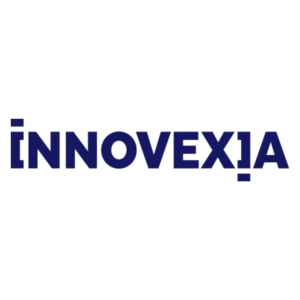
Since the advent of Industry 4.0, we have witnessed a significant transformation in how industries operate, driven by technologies such as IoT, Big Data, artificial intelligence, automation, and robotics. These innovations have brought substantial gains in efficiency and productivity, allowing companies to operate with greater precision and lower cost. However, the continuous evolution of markets and consumer demands is leading to a new phase: Industry 5.0. Industry 5.0 extends the concepts introduced by Industry 4.0, incorporating new principles such as human-machine collaboration, human-centred technologies, ethics, social responsibility, and resilience. This new era seeks not only to optimize production processes but also to integrate social and environmental concerns, promoting a more sustainable and ethical balance.
Challenges and Opportunities in the New Economy
Industries face significant challenges in adapting to this new reality. The need for constant innovation and rapid changes in business models require companies to be more agile and responsive. While startups can develop and launch solutions quickly due to their flexibility and lack of complex legacies, traditional industries struggle to balance maintaining their existing systems with implementing new technologies. Innovation today is not just about improving internal processes but also about creating new business models and personalized experiences for customers. This implies ideating, validating, building, and launching new technological products and services quickly, a challenge that many industries are still learning to overcome.
Low Code and No Code Technologies: Accelerating Innovation
One of the emerging solutions to accelerate software development and innovation are Low Code and No Code platforms. These technologies allow companies to develop applications quickly and at significantly lower costs, democratizing software development and enabling non-technical teams to participate in the creation process.
Low Code and No Code: Concepts and Benefits
Low-code and no-code platforms are especially useful for industries that need to test and validate new ideas quickly. By reducing development time by up to 10 times, these platforms enable companies to respond agilely to market changes and customer demands without compromising the quality or security of the solutions. Low Code: Low Code tools allow developers to create complex applications with minimal manual coding. Using graphical interfaces and pre-built components, Low Code speeds up the development process while maintaining the flexibility and customization necessary to meet specific business needs. No Code: No Code tools go a step further, allowing users without technical knowledge to advance in software development. With intuitive interfaces and drag-and-drop features, No Code makes it possible for anyone within the organization to contribute to innovation, eliminating barriers and democratizing software development.
Use Cases and Practical Applications
Low Code and No Code platforms have a wide range of applications in industries, facilitating innovation on various fronts: Internal Process Automation: Companies can quickly develop applications that automate repetitive tasks, improving efficiency and reducing human errors. For example, inventory management or human resources processes can be automated to free up employees’ time for more strategic activities. Custom Application Development: Industries can create customized applications that meet their specific needs without relying on external suppliers. This includes everything from production management systems to customer interaction platforms tailored to the particularities of each company. Rapid Prototyping: Before investing heavily in a new solution, companies can create functional prototypes to validate their ideas and test market hypotheses. This reduces the risk and cost of innovation projects, allowing for a more experimental and iterative approach. System Integration: Low-code and no-code platforms facilitate the integration of different legacy systems, creating cohesive solutions that improve data visibility and management. This is essential for companies that operate with a variety of technologies and need a unified view of operations.
The Software Development Revolution
By adopting low-code and no-code technologies, industries not only accelerate development time but also foster a culture of continuous innovation. These platforms allow companies to be more adaptable and responsive, essential characteristics in a rapidly evolving market. The software development revolution, driven by Low Code and No Code, is democratizing innovation, allowing more people within organizations to participate in the creative process. This inclusion not only expands the potential for innovation but also creates a collaborative culture where everyone has the opportunity to contribute to the company’s success.
Conclusion
The transition to Industry 5.0 represents a significant advancement, where the integration of advanced technologies is complemented by a human-centred and sustainable approach. Industries that can balance operational efficiency with constant innovation will be better positioned to face the challenges and seize the opportunities of the new economy. Investing in Low Code and No Code technologies is an essential step to remain competitive and relevant in the current landscape. With these strategies, industries will not only improve their efficiency and reduce costs but will also be prepared to respond quickly to market changes and customer needs, promoting a more sustainable and innovative future.
Samuel Manuel Silveira is the CEO and Founder of Evoluum.

